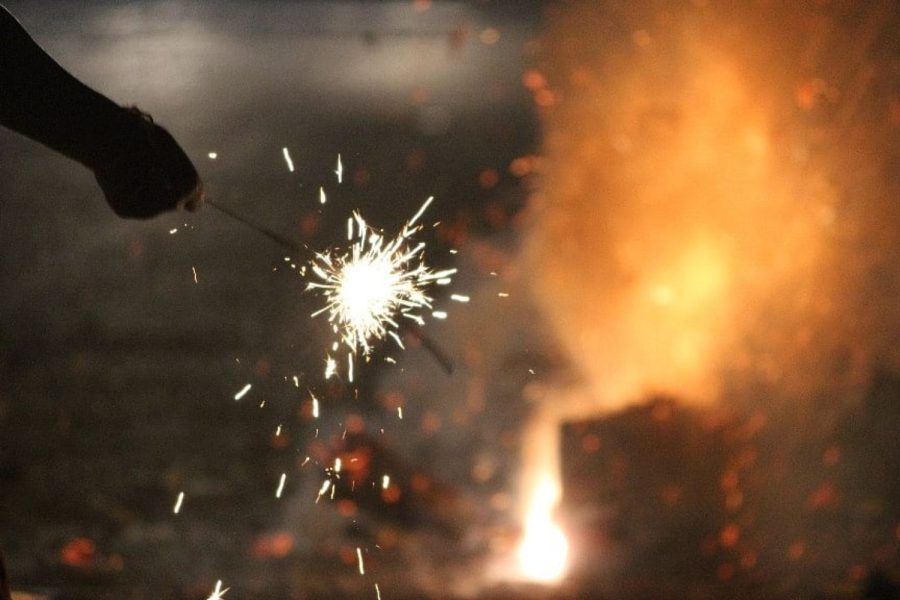Often used as a means of celebration, fireworks pollute the environment, harm our health, and serve as a danger to wildlife by releasing greenhouse gases and metallic compounds into the atmosphere.
Utilizing chemicals such as barium, aluminum, and oxidizers, the leftover residue pollutes the surrounding air and waterways after the explosion. For our local ecosystem, including residents, this can pose a major problem.
“The celebratory practice of launching big or small fireworks into the sky is completely excessive. There are just too many natural spaces, animal homes, and people at risk in our county,” said Kamille Lang, a resource conservation specialist who works for the San Mateo County Office of Sustainability.
The oxidizers used to facilitate the burn of the fireworks are chemically rich and are otherwise known as nitrates, chlorates, and perchlorates. In fireworks, these chemicals release excess oxygen to make a greater explosion and can have worrying environmental consequences.
“Perchlorates can dissolve in water, contaminating rivers, lakes, and drinking water,” said Alexandra Franklin-Cheung, a journalist for BBC Science Focus.
Once released into the atmosphere, the explosion-inducing oxidizers and the color-producing metallic compounds must return to the ground. Once they descend, they are deposited into nearby ecosystems and urban areas.
“When inhaled or ingested, these metals can cause a huge variety of short and long-term reactions, ranging from vomiting, diarrhea, and asthma attacks, to kidney disease, cardiotoxic effects, and a variety of cancers,” said Devorah Bennu, a scientist with a Ph.D.
But the substances that return to the ground are not the only ones emitted by fireworks. Fireworks also release a fine cloud of smoke and particulate matter, affecting local air quality and the greenhouse gasses in the atmosphere.
According to Environmental Protection UK, a main component of fireworks is gunpowder, along with sulfur, small amounts of particulates, metal oxides, and organic compounds. The released smoke and gases include carbon dioxide, carbon monoxide, and nitrogen, which are three greenhouse gases responsible for climate change.
Fireworks also create a burst of ozone, another reactive greenhouse gas molecule, leading to lung damage. According to a study published in Nature Magazine on the formation of ozone by fireworks, ultraviolet light emitted by setting them off at night produces ozone.
The chemistry behind fireworks can be used to understand the function of each chemical element. These elements interact to create the colorful skies we see during New Year’s Eve and the Fourth of July.
“When you light a firework, electrons jump to their excited states. The light we see is the photon being released when the electron falls back down to its ground state,” said Alyssa Lu, a chemistry teacher at Carlmont.
The color of light produced is reliant on the specific elements the firework is composed of. The reaction will give off different colors based on the substance because of the different amounts of energy released.
These effects can be seen around the world. During times of widespread firework use, the Calgary Wildlife Rehabilitation Society reported that wildlife is increasingly sighted on roads and in unusual areas, according to CBC News.
The noises expelled from the fireworks cause anxiety in animals and disorient them, leading deer to flee into roads and birds to fly into windows. The result from fireworks is then air and ground pollution as well as vehicle damage and dead animals.
“The debris dispersed into the air naturally settles on top of green leaves, impacting plant photosynthesis. When that debris settles onto the ground, it changes the soil’s chemical makeup and changes the nutrients available for plants. If an animal relies on a certain plant as a food source, they might eat the debris from a fireworks display,” Lang said.
According to the Animal Advocates of South Central PA, wildlife drink from the waterways polluted by the chemicals released from fireworks. The chemicals can poison animals, and the additional litter from the explosives can cause them to suffocate to death.
Noting the tradition of lighting fireworks, climate advocates such as Youth Climate Ambassador Swaraa Joshi hope that people will pay more attention to the consequences of firework usage next time they think to buy them for a celebration.
Joshi said, “The next time you go to light a firework, take into consideration the air and water getting polluted, the wildlife potentially harmed, and if that doesn’t stop you, think about your health.”






















